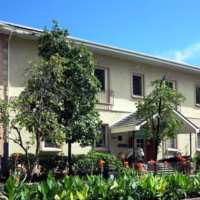
Seychelles Natural History Museum
The Seychelles Natural History Museum explores the history of the Seychelles, from the island's geological development to the Second World War. It is located in Victoria, the capital city, next to the main post office. The museum covers botany, zoology, geology and anthropology, as well as military and social history. It receives around 1,500 visitors per year, largely from overseas.
The museum has one gallery that is divided into thematic areas. Seven prominent aspects of Seychelles’ natural heritage are showcased through displays with artefacts and small dioramas. These include the flora and fauna of the island, religious practices and the movement for independence. Other areas examine traditional crafts and innovative inventions.
One of the sections in the exhibition examines the system of slavery that thrived in the Seychelles during the eighteenth and nineteenth centuries. The majority of the enslaved were forcibly transported from Madagascar and Mozambique to work on the plantations. The display includes instruments of brutality, including an iron slave collar with bells that made escape impossible for the wearer. It also includes archival material, such as newspaper advertisements offering slaves for sale. The section finishes with an inspiring story of the enslaved resistance leader Pompey.
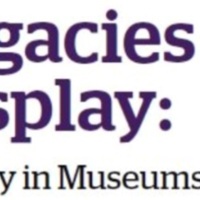
National Museum Afroperuano
The National Museum Afroperuano (or National Museum of Afro-Peruvian History) opened in 2009. Housed in the 'House of Thirteen Coins', in Lima, the museum is dedicated to acquiring, preserving and interpreting objects relating to African history in Peru.
The exhibitions begin by examining the arrival of Africans in Peru, via the Portuguese slave trade. The interpretation explores the process of enslavement and transportation alongside the nature of plantation work and the treatment of the enslaved by the Portuguese. A range of artefacts, artist representations and artefacts visually present these issues to visitors.
The exhibition examines the abolition of slavery in 1856 following the rise of Simon Bolivar and the independence of Peru. Objects and photographs then depict the influences of African culture in different aspects of Peruvian life, including music, dress, art and food.
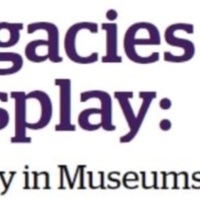
House of Negritude and Human Rights
The House of Negritude and Human Rights opened in 1971 in the former Champagney town hall. It relocated to its present site in 1995. The museum was founded after local historian René Simonin discovered a document in the Haute-Saône departmental archives. This document is known as 'Article 29' of the Champagney Register of Grievances. In 1789, the inhabitants of Champagney, drew up their list of grievances at the request of King Louis XVI. This document would be used to prepare the meeting of the Estates General that would open the process of the French Revolution. 'Article 29' was a one-of-a-kind request to abolish black slavery on humanitarian grounds.
The museum is a tribute to the "Champagnerots" (people of Champagney) who made this extraordinary request. Text interpretation explores the context of the request, examining the french slave trade and the movement for abolition in other European countries in the nineteenth century. There are artefacts that highlight the terrible conditions faced by the enslaved, including a replica slave ship and items recovered from plantations in Haiti.
The interpretation also goes on to examine other forms of slavery in the contemporary world. This is embedded into the museum's popular education programmes that reflect on the development and importance of human rights around the world.
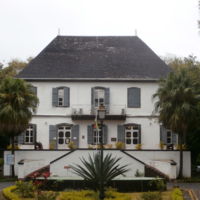
National History Museum
The National History Museum of Mauritius opened in 1948. It is housed in an French colonial villa built in 1772 that was formerly used as a military hospital, a naval museum and the Museum of Historical Souvenirs. It is managed by the Mauritius Museums Council, under the governance of the Ministry of Arts and Culture. The museum explores the social and cultural history of Mauritius; from its discovery by the Portuguese at the start of the sixteenth century, through its successive colonisations by the Dutch, French and British, up to the end of the nineteenth century.
The first floor of the museum exhibits the Dutch, French and Anglo-French wars. Each room explores a different era with artefacts from the period; these range from furniture and decorative arts to weapons, maritime equipment and ceramics.
On the second floor of the museum there is an exhibition dedicated to the British rule of Mauritius, from 1810 until 1968. The interpretation examines the transformation of Mauritius from a maritime economy to an agricultural one, with a key focus on the production of sugar. Alongside this is a discussion of the use of slavery and the development of the slave trade, indentured labour and Indian immigration. Artefacts here include agricultural tools, paintings and drawings depicting the changing landscape and the workforce, and archival documents.
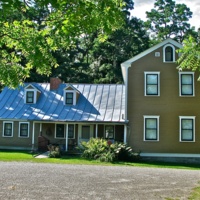
Rokeby Museum
The Rokeby Museum presents a 'nationally significant Underground Railroad story tucked inside a quintessential Vermont experience.' The museum was established in 1961, and covers 100 acres, with ten historic buildings. Originally a prosperous merino wool farm, Rokeby was owned by the Robinson family during the nineteenth and twentieth centuries. The family were abolitionists, and provided a safe haven for fugitive slaves from the American South.
The Underground Railroad Education Centre which marks the entrance to the museum houses the sites permanent museum exhibitions. 'Free & Safe: The Underground Railroad in Vermont' tells the stories of Jesse and Simon; two fugitive slaves who found shelter at Rokeby during the 1830s. Using a range of historic documents and artefacts the exhibition traces their journey from slavery to freedom. It also introduces the Robinson family and their support of the American abolition movement. The use of audio and film, recreating some of the voices of the exhibition's main characters, brings the history to life for visitors.
The rest of the museum is made up of historic buildings, including the main farmhouse, that have been restored and refurnished in order to provide visitors with a glimpse as to what life would have been like on the farm when Jesse and Simon were there. It is thought that both would have spent a significant length of time working on the farm before moving on towards Canada.

Mobee Royal Family Orginal Slave Relics Museum
The Mobee Royal Family Original Slave Relics Museum is a small museum housed in a nineteenth century colonial building. It showcases the role of the local 'Chief Mobee' in the enslavement of local Africans during the transatlantic slave trade, as well as the role of his son (and successor) in abolishing slavery in the area.
The museum houses one exhibition which discusses the arrival of Europeans to the Badagry area and the origins of the trade in human beings. Artefacts highlight the brutal nature of the capture and the enslavement of African people. These include yokes, chains, a mouth lock that presented the captives from speaking, and handcuffs for children. Other objects are examples of trade goods that were received by the Chief in exchange for a supply of people. Text interpretation also provides visitors with information about the terrible conditions faced by the enslaved during the Middle Passage, and images provide representations of life on the plantations.
The museum is often visited as part of a 'Black History Tour' with the former slave market and the Black History Museum.
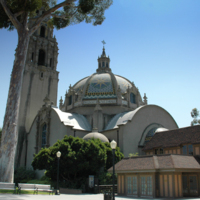
San Diego Museum of Man
The San Diego Museum of Man is an anthropological museum that originated from the 1915 Panama-California Exposition that celebrated the opening of the Panama Canal. Over the last century, the museum has expanded and developed in its original buildings at San Diego's Balboa Park. It took its present name in 1978. The museum's mission is to inspire human connections by exploring human experiences, around the world and through the ages.
The museum features twelve permanent exhibitions that explore a range of themes linking to human development and cultures. These include 'Ancient Egypt', 'Living with Animals' which explores the human practice of keeping pets, and 'PostSecret' which examines the concept of secrecy throughout societies.
Another permanent exhibition, 'Race: Are we so different?' explores the distinctions of race and the origins of racism in America. A timeline maps instances of racism throughout the nation, and includes focusses on Native American communities, as well as enslaved Africans, Civil Rights and the Jim Crow era. Text interpretation also includes biological facts about race and genetics to address long held historic views about hierarchies of race.
Initially a temporary exhibition, it was so successful with visitors the museum decided to house it permanently. 'Race: Are we so different?' was developed in conjunction with the American Anthropological Association and the Science Museum of Minnesota. The exhibition features heavily in the museum's school programmes in providing a platform to promote discussion of feeling, thinking, acting, and reflecting on race and identity, and to raise awareness and build positive relationships across communities in America today.
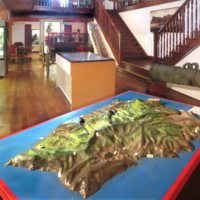
Museum of Saint Helena
The Museum of Saint Helena originated as a small natural history collection in 1854. Over the last 150 years it has moved three times before being officially opened in its current site in 2002 to mark the 500th anniversary of the island's discovery. It is housed in an eighteenth-century former power station in the island's capital, Jamestown. The museum explores the history of St Helena and it's position in the world. It has a large collection of physical artefacts supplemented by a digital archive of images, videos and audio.
The permanent exhibition offers a chronological view of Saint Helena's history, beginning with its geological development. The displays then explore the discovery of the island by European's, the role of the East India Company and migration. There is also a display about Napoleon Bonaparte's exile to Saint Helena.
Within the displays about colonisation and the East India Company are mentions of enslaved Africans brought to the island. Abolition and emancipation are also examined, as the interpretation moves on to explore the diverse make up of Saint Helena's population into the twentieth century. These displays are supported with artefacts and finds from recent archaeological digs on the island.
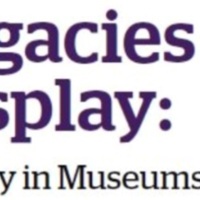
Museum of Modern Day Slavery
The Museum of Modern Day Slavery opened in 2014. It is managed by Elijah Rising, a prayer gathering that aims to end sex trafficking through prayer, awareness, intervention, and restoration. The museum is a big part of that mission and is housed in a former brothel that Elijah Rising negotiated the closure of in 2012. It is the only museum in the USA dedicated solely to interpreting and raising awareness for slavery in the present day.
The location of the museum provides visitors with a rare opportunity to see inside a brothel. Throughout, there is text interpretation that provides information about sex trafficking in Houston. This is supported by a small collection of artefacts that have been collected by the museum's staff and volunteers when conducting field research with victims of trafficking in the city. The museum also draws attention to the victories of abolitionists in the past through text panels to inspire visitors to take action to end slavery in the present.
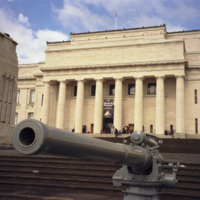
Auckland War Memorial Museum Tāmaki Paenga Hira
The Auckland War Memorial Museum Tāmaki Paenga Hira is one of New Zealand's oldest museum. Founded in 1852, the museum was formally inaugurated in its current site in 1929. It narrates the story of New Zealand, its place in the Pacific, and its people. The museum is also a war memorial for Auckland and houses one of New Zealand's three national heritage libraries.
The museum's collections incorporate military history, social history, local history, natural history and decorative arts. These are displayed through a range of permanent and temporary exhibitions, and on the museum's website. The exhibitions are themed and cover New Zealand's involvement in conflict, its natural history and ecological development and the arrival of Europeans. It also has three permanent galleries that explore its globally significant collection of Maori artefacts.
'He Taonga Māori' (or the Maori Court) is the gallery that greets visitors when they enter the museum's ground floor. This exhibition interprets the past, present and future of the Maori communities in New Zealand using over 1000 objects and a number of original, full-sized Maori buildings, including a meeting house. The collections are used to illustrate everyday Maori life, and range from carved wooden items, to woven textiles and tools. Oral testimonies from members of the Maori community are used to add a further layer of interpretation to the artefacts. A small area of the display discusses the Maori use of slavery, particularly with regards to captives from war.
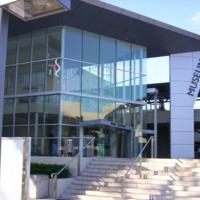
Queensland Museum
The Queensland Museum is a museum of natural history, science, human achievement and local interest that was founded by the Queensland Philosophical Society in 1862. Over the last century it has been housed in various sites, namely former colonial administrative buildings, until the local government had a purpose built site constructed for the museum on Brisbane's South Bank in 1986. Funded by the Queensland Government, the Queensland Museum Trust operates a number of sites in addition to the Queensland Museum. These include the Science Centre, the Queensland Museum of Tropics and the Workshops Rail Museum.
The museum's aim is to connect its visitors to Queensland the place, the people and the region's position in the world through artefacts, interactives and events. There are over one million items in its collections. The permanent exhibitions look at Queensland's ecological and social development.
In 'Histories of Queensland,' the exhibition explores the theme of migration to the area. As well as examining the European migration to the area during the eighteenth and nineteenth centuries, the displays discuss the role of indentured labourers from the South Sea Islands. These people were forcibly transported from their homes to work in Queensland's sugar industry. The display informs visitors about the hardships faced by these individuals and the negative legacies this brutal enslavement inflicted on the South Sea Islands from the nineteenth century until today.
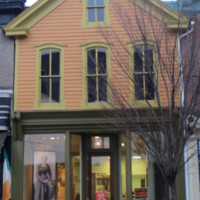
Harriet Tubman Museum
The Harriet Tubman Museum is a small museum located in Cambridge, Maryland, a few miles from where Harriet Tubman was born. The museum originated as a community organization which was planning a single three-day event honouring Harriet Tubman in 1983. Over the years, the Harriet Tubman Organisation has adjusted its goals; today its mission 'is to develop programs and services for children and families and to preserve the history and memory of Harriet Tubman by offering the general public an interpretive history of her achievements.'
The museum's permanent exhibition is a combination of interpretive text and artefacts, many recovered from nearby plantations. The artefacts on display represent the objects that the enslaved would have used in their daily lives, as well as more brutal symbols of slavery like shackles. The museum, which accepts admission donations, is usually open Tuesday - Saturday. Through the museum, visitors can also organise trips to the actual property where Tubman was born and worked. The museum hosts school groups as well as a range of special events throughout the year.
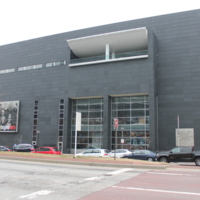
Reginald F. Lewis Museum of Maryland African American History and Culture
The Reginald F. Lewis Museum of Maryland African American History and Culture was created out of the passion and activism of businessman Reginald F. Lewis. Lewis rose from humble beginnings to earn a place at Harvard Law School, establish the first African American law firm on Wall Street and become the wealthiest African American in the US. In 1993, he died suddenly after a short illness. During his illness, he made known his desire to create a museum of African American culture and after his death, the non-profit foundation started in his memory accomplished that.
The museum is located in downtown Baltimore close to one of the several locations of former slave pens. The collection 'explores the African American experience and tells the universal story of the struggle for liberty, equality and self-determination.' The main collection is housed on the third floor and is divided into three sections: Building Maryland, Building America; The Strength of the Mind; Things Hold Lines Connect. Building Maryland, Building America has a heavy focus on slavery, explaining the roles of the enslaved in urban and rural environments. Unlike the cotton plantations of the Deep South, Maryland slavery ranged widely: tobacco plantations, shipyards, oyster shucking and iron furnaces to name a few.
Throughout the exhibitions, the interpretive text is supplemented with interactive displays, video and audio presentations and artwork. The overreaching message of the museum is that African Americans have contributed to the US since their initial forced arrival and have worked tirelessly to better their plight; through emancipation, the right to vote, the Civil Rights Movement and into the more recent social movements. The museum does not shy away from presenting the brutal side of slavery and Jim Crow, with slave collars, shackles, reward notices and video in connection to lynching are sensitively displayed.
The ground floor of the museum hosts temporary exhibitions and there is dedicated education space for the many school trips they host during the year. The museum also provides learning resources to assist with the local curriculum, offering lesson plans and outreach sessions in local schools. Throughout the year, the museum hosts a diverse range of events. The museum is open Wednesday through Sunday with a small admission fee.
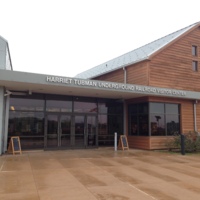
Harriet Tubman Underground Railroad National Historical Park
The Harriet Tubman Underground Railroad National Historical Park was established in 2003, the 100th anniversary of Tubman's death, in rural Dorchester County. In 2017 the Harriet Tubman Underground Railroad Visitor Centre was officially opened. The visitor centre was a collaborative project between the US National Park Service and the Maryland Park Service. The building houses exhibition space, a research library and gift shop. Also on location is a public pavilion and legacy garden.
The design of the site was built around the importance of northward movement in the slave's quest for freedom. The legacy garden stretches out north between the buildings, offering an expansive and hopeful view. The view south is more enclosed and fragmented, reflecting the intolerable existence for those enslaved. The visitor centre houses an exhibition that chronicles the life and accomplishments of Tubman; her birth into slavery, escaping and subsequently returning to free friends and family, her work as a Union spy and her activism after the Civil War. The story is told through a combination of interpretive text, videos, murals, dioramas and her own powerful words.
The park and visitor centre are open seven days a week and are free to the public. The visitor centre also provides further information on the Harriet Tubman Underground Railroad Byway Driving Tour, which has 36 stops throughout the Eastern Shore of Maryland linked to Tubman's life.
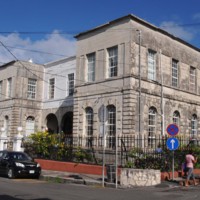
Museum of Antigua and Barbuda
Housed in the former courthouse of Antigua's capital, St John's, the Museum of Antigua and Barbuda opened in 1985. Managed by the Historical and Archaeological Society, it interprets the history of Antigua from the island's geological birth until its political independence in 1967. Collecting is central to the museum's ethos and it has developed a large collection of items relating to its local history through acquisitions and donations. It also has a digital records library with over 25,000 records available to browse.
The exhibits themselves trace the history of Antigua chronologically. The first gallery maps the geological development of the island using natural history specimen and artist interpretations alongside text panels. There are also displays that showcase the traditional crafts of the island, including basket weaving.
The second gallery then explores the arrival of the Europeans to the island and the development of the plantation economy fueled by the transatlantic slave trade. Here the displays examine what life was like on the plantations, using objects that highlight the brutal nature of enslavement, as well as archaeological samples that provide an insight into the everyday life of the enslaved. Some text panels provide information about instances of resistance, alongside images of supporting archival sources.
The final gallery explores how the island developed following the abolition and then the emancipation of the slave trade, two world wars and political independence. Here, objects are complemented with oral testimonies from local people.
The museum also has a gallery for temporary exhibitions focussing on different aspects of Antigua and Barbuda's local history. It also runs a programme of community events, and a series of education sessions for schools.
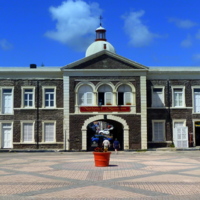
The National Museum of St Kitts
The National Museum of St Kitts is housed in the Old Treasury Building, built by the British colonial administration in 1894 and known as the 'gateway to Basseterre' due to its imposing size. The museum opened in 2002 and charts the history of St Kitts from its earliest, indigenous populations to its independence from colonial rule in 1983.
The museum has three permanent galleries which cover St Kitts' history in a chronological timeline making use of a small collection of artefacts, alongside images and text panels. The first gallery examines the indigenous populations of the island, alongside exhibits relating to natural history and ecology.
The second gallery explores the arrival of Europeans to the island and the development of slavery and the plantation economy. There are artefacts showcasing the brutal nature of enslavement, including an iron slave collar. It also explains the processes involved in the cultivation of sugar, as used on the plantations during the eighteenth and nineteenth centuries. It also provides a narrative of abolition and emancipation.
The final gallery examines the colonial governance of St Kitts post emancipation, through to independence from British rule in 1983.
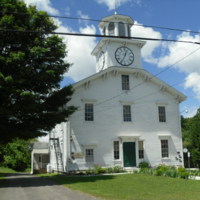
National Abolition Hall of Fame and Museum
The National Abolition Hall of Fame and Museum occupies the upper floor of the former Presbyterian Church of Smithfield, built in 1820. In 1835 it was the site of the first complete meeting of the New York State Anti-Slavery Society, and it opened as a museum to represent the history of the abolition movement in 2004. The lower floor houses the Smithfield Community Centre. In 1994, the building was added to the New York State and National Registers of Historic Places. In 2004, it was designated as a site on the New York State Underground Railroad Heritage Trail.
The Hall of Fame and Museum honours abolitionists and their achievements, periodically inducting new members. It also aims to educate about the legacy of the movement and to inspire its visitors to engage in the 'new struggle' to end racism. The museum features an introductory film that provides background context to the abolition movement, regarding the transatlantic slave trade. Written text panels, archival materials and art are used to add further depth to the narrative of the American abolition movement.
The museum also runs a programme of visitor events, and education activities.
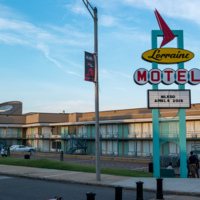
National Civil Rights Museum
The National Civil Rights Museum is housed in the Lorraine Motel, where civil rights leader Dr. Martin Luther King Jr. was assassinated on 4 April, 1968. It was founded in 1991 with the mission of sharing and raising awareness about the lessons and legacies from the Civil Rights Movement. The museum makes use of historic collections and a range of interactive exhibits, including film and audio, to tell these stories. Recently renovated in 2013-14, the museum is one of the top rated by the American Alliance of Museums and was a founding member of the International Coalition of Sites of Conscience.
The museum has five permanent exhibitions that include 260 artefacts, 40 film installations, oral histories and interactive media to guide visitors through five centuries of history. The exhibitions explore Civil Rights protest techniques- including sit ins, bus boycotts and freedom rides- as well as the Black Power movement and the assasination of Martin Luther King Jr. and its aftermath on the Civil Rights movement.
The first exhibition that visitors enter explores the longer 'Culture of Resistance' that was present in the United States prior to the Civil Rights movement, as seen through resistance to the system of slavery that dominated the country for centuries. Focussing on the period 1619-1869, the exhibition includes large scale interactive maps that emphasise the global impact of the transatlantic slave trade. There are films and art installations in the form of sculptures that show the terrible conditions inflicted on the enslaved people. Illuminated channels provide statistics and further information, including the number of people captured, goods cultivated and wealth created.
The museum also has facilities for temporary exhibitions, both on the site and online, and runs an immersive education programme for both children and adults.
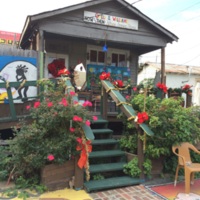
Odell S. Williams Now and Then African-American Museum
The Odell S. Williams Now and Then African-American Museum was established by Sadie Roberts-Joseph in 2001. The museum is named for Odell S. Williams, a well-loved educator in the Baton Rouge area. It was founded as Joseph identified a need in the local community for a cultural space that celebrated African American history.
The museum has a range of vibrant exhibits, showcasing the contributions of local African Americans through history, across a range of different fields. These include, music, cuisine, education, politics and business. Visitors can step onboard an authentic bus from 1953 and explore Baton Rouge's role in the civil rights movement.
The museum's display on agriculture looks at the early plantation economy of the area, and the key crops that were grown then. It also explores the experience of the enslaved Africans that who used as labour on those plantations.
It has a broad events programme, and runs the area's annual Juneteenth event.
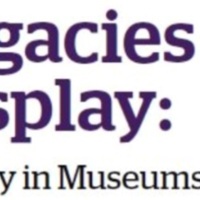
Pompey Museum of Slavery and Emancipation at Vendue House
The Pompey Museum is named after a courageous enslaved man who led a slave revolt from the Rolle Plantation on Steventon, Exuma, Bahamas. Vendue House, where the museum is located, was built in the 1790s and operated as a market place where enslaved people and other goods were sold during the nineteenth century. The house was opened as a one-room museum in 1992 and was redeveloped in 2014.
The museum is dedicated to the preservation and interpretation of the lived experience of enslaved people, particularly during transatlantic slavery, and its aftermath in The Bahamas. It features a small selection of objects and images that complement these themes. Following its redevelopment in 2014, the museum curated a powerful exhibition entitled 'Wade in The Water: Peter Mowell, the Last Slave Ship in The Bahamas' which charted the plight of the enslaved Africans on the slave ship that wrecked off Lynyard Cay in the Abacos in 1860.